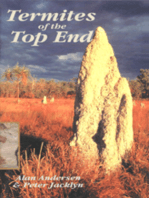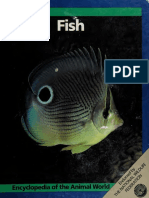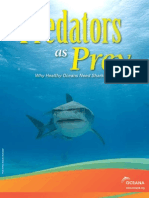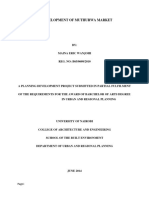0 ratings0% found this document useful (0 votes)
272 viewsCoral Reefs
Coral Reefs
Uploaded by
api-252647924Copyright:
© All Rights Reserved
Available Formats
Download as PDF, TXT or read online from Scribd
Coral Reefs
Coral Reefs
Uploaded by
api-2526479240 ratings0% found this document useful (0 votes)
272 views13 pagesOriginal Title
coral reefs
Copyright
© © All Rights Reserved
Available Formats
PDF, TXT or read online from Scribd
Share this document
Did you find this document useful?
Is this content inappropriate?
Copyright:
© All Rights Reserved
Available Formats
Download as PDF, TXT or read online from Scribd
Download as pdf or txt
0 ratings0% found this document useful (0 votes)
272 views13 pagesCoral Reefs
Coral Reefs
Uploaded by
api-252647924Copyright:
© All Rights Reserved
Available Formats
Download as PDF, TXT or read online from Scribd
Download as pdf or txt
You are on page 1of 13
Coral Reefs
A Reading AZ Level U Leveled Reader
Word Count: 1,690
Visit www.readinga-z.com
for thousands of books and materials.
www.readinga-z.com
Written by Paula Schricker
LEVELED READER U
N
Q
U
Coral
Reefs
Coral Reefs
Level U Leveled Reader
Learning AZ
Written and Illustrated by Paula Schricker
All rights reserved.
www.readinga-z.com
Photo Credits:
Front cover: Michael Aw/PhotoDisc/Getty Images; back cover, pages 4, 5:
courtesy of Florida Keys National Marine Sanctuary/NOAA; title page, pages 6,
9, 10: courtesy of Mohammed Al Momany/NOAA; pages 3, 20 (both): courtesy
of Paige Gill/Florida Keys NMS/NOAA; page 7: courtesy of Steven Cook/
Florida Keys National Marine Sanctuary/NOAA; pages 8, 19: courtesy of Florida
Fish and Wildlife Conservation Commission; page 12: courtesy of Liam Gumley,
Space Science and Engineering Center, University of Wisconsin-Madison and
the MODIS science team, NASA; page 13: courtesy of Peter Craig/National
Park of American Samoa/NPS/U.S. Department of Interior; page 15: courtesy
of ISS Crew, Earth Observations experiment and the Image Science and Analysis
Laboratory, NASA-JSC; page 16 (main): courtesy of Andrew Bruckner/NOAA
Fisheries; pages16 (inset), 17: courtesy of USGS/Coastal & Marine Geology
Program/CCWS; page 18: courtesy of David Burdick/NOAA; page 21: courtesy
of Dave Burdick; page 22: 2001 www.ecoreefs.com; page 24:
Harald Bolten/Dreamstime.com
Written by Paula Schricker
www.readinga-z.com
Coral Reefs
Correlation
LEVEL U
Q
40
40
Fountas & Pinnell
Reading Recovery
DRA
Coral Reefs Level U 3 4
Table of Contents
Introduction . . . . . . . . . . . . . . . . . . . . . . . . . . . . . . . 4
What Is Coral? . . . . . . . . . . . . . . . . . . . . . . . . . . . . . 5
A Busy Underwater Community . . . . . . . . . . . . . . 9
Where Do Corals Live? . . . . . . . . . . . . . . . . . . . . . 11
Threats to Coral Reefs . . . . . . . . . . . . . . . . . . . . . . 16
Protecting the Reefs . . . . . . . . . . . . . . . . . . . . . . . . 20
Glossary . . . . . . . . . . . . . . . . . . . . . . . . . . . . . . . . . . 23
Index . . . . . . . . . . . . . . . . . . . . . . . . . . . . . . . . . . . . 24
Introduction
Coral reefs are massive undersea communities
that are home to thousands of living organisms.
A reef can be hundreds of miles long. The
buildings of this community are made up of
many types and shapes of corals. Day and night,
thousands of animal inhabitants bustle about,
hunting, eating, and avoiding being eaten. Almost
one-quarter of all the plants and animals in the
ocean live around coral reefs. Thats over 4,000
kinds of sh and 700 kinds of coral that make
reefs their home.
Many kinds of coral, fish, and sea creatures live in a reef.
Coral Reefs Level U 5 6
What Is Coral?
The many corals that form the reefs may
appear at rst glance to be oddly shaped rocks
or spiny plants. Corals are actually groups of tiny
animals called polyps (PAH-lips). Most polyps
are very smallbetween the size of a pinhead
and the size of a pea. One branch or mound of
coral can have thousands of these tiny, pea-sized
polyps attached to it. Each polyp has a sac-like
body and a mouth that is surrounded by tiny
tentacles. Polyps are eating machines. At night,
they extend their tentacles, like arms and hands,
to catch tiny animals and nutrients they need.
Polyps open their tentacles only at night.
There are hundreds of kinds of corals. Most
of them are divided into two main types: hard,
or stony, corals and soft corals. Stony coral
polyps form hard skeletons. When the outer
polyps die, their hard skeletons remain. Over
time, the accumulation of millions of these hard
skeletons helps to build a reef. Most kinds of
stony corals live together with various species of
plants called algae (AL-jee). The many types of
algae help to supply food for the coral and for
many of the sh that live around the reef.
These feathery polyps form branches.
Coral Reefs Level U 7 8
Corals are often named after what they
resemble. Stony corals include brain corals, which
look like brains, and elkhorn corals, which look
like the broad horns of an elk. Soft corals often
look like trees or other plants. Soft sea whips
and sea pens have long, narrow branches covered
with polyps. Sea whip polyps are about one
quarter-inch long with eight tentacles each.
The tentacles catch tiny animals and sh. Sea
fan corals are wide and branchinglike a fan.
Their expansive shape traps bits of plankton to
eat as they drift by.
Elkhorn coral branches out as an elks horns do.
Soft corals grow exible, woody cores
instead of the hard skeletons that stony corals
have. Soft corals are able to bend with the tides.
Some kinds of soft coral are poisonous and will
sting if touched. Others, like the sea pen coral,
will collapse and hide in the sand if they
are approached.
(Left) A sea fan (a soft coral); (right) a brain coral (a stony coral)
Coral Reefs Level U 9 10
A Busy Underwater Community
Most people think of brightly colored sh
when they think about coral reefsand with
good reason. Thousands of sh, from large sharks
to the tiny goby, inhabit reefs. They depend
on the reef for food and for protection from
becoming food themselves. Some sh live off the
algae and plankton around the reef, and some eat
other sh that live there. A few types of sh even
eat the coral itself.
Schools of brightly colored fish are common on reefs.
Crustaceans such as shrimp, lobsters, and
crabs also prefer reefs as a favorite eating spot.
Sea urchins and starsh catch clams and smaller
shellsh hidden among the coral branches.
Waving sea anemones, which look like graceful
owers, hide in shallow crevices of the reef to
wait for their food to drift past. Large holes in
the reef make good homes and hiding spots for
moray eels. No space is wasted on a bustling reef.
Reefs offer many good hiding places for animals such as this
moray eel.
Coral Reefs Level U 11 12
Where Do Corals Live?
Most reefs are located close to shore in
warm tropical waters. They can also grow where
warm currents ow from the tropics, such as in
Florida and southern Japan. Coral grows best in
warm water that is between 21 and 29 degrees
Celsius (7085 F).
Since algae need sunlight to make food, most
corals must live near the surface of the water.
A few colonies of deep, or cold-water, coral have
been found at depths from 900 to 1,800 meters
(3,000 to 6,000 ft). These individual coral patches
dont form long reefs but they do provide shelter
for many different types of sh. Since algae
cannot grow at depths where light is limited, the
deepwater corals feed on other organisms.
The dark areas of the map show the location of coral reefs.
Besides needing the right depth and
temperature to thrive, coral reefs are sensitive
and cannot survive in many areas because of
environmental conditions. They do not grow well
near the mouths of rivers, where dirt, debris, and
freshwater runoff ow into the sea. Fresh water
can kill coral. Dirt and debris can cause serious
physical damage to reefs. Dirt and excess salt can
also interfere with corals food source. Reefs can
be smothered by dirt or invading plant life. Large,
violent waves, such as those caused by a tsunami
(sue-NAH-mee), can even break reefs. If a
powerful tsunami strikes an area, thousands of
years of coral growth can be destroyed in just a
few hours by the force of the wave surges.
Sediment and pollution from the Mississippi River enters the
Gulf of Mexico.
Coral Reefs Level U 13 14
As corals are very slow growing, a reef takes
a long time to expand its size or to recover from
damage. Stony corals, such as brain corals, grow
the slowest. They add only 5 to 25 millimeters
(0.21 in) of skeleton per year. Most reefs are
between 5,000 and 10,000 years old. Some living
coral reefs began growing almost 50 million years
ago.
Large brain corals can be thousands of years old.
There are three types of coral reefs: fringing
reefs, barrier reefs, and atolls. Fringing reefs are
located close to the shore. They usually follow
the natural shoreline, or fringe, of the land.
Fringing reefs are common in Hawaii and parts
of the Caribbean.
Barrier reefs have a larger lagoon, or area of
water, between the reef and the shore. The largest
barrier reef in the world is the Great Barrier Reef
in Australia. It is 2,000 kilometers (over 1,242 mi)
long. It is made up of over 3,000 individual reefs
and islands and is home to nearly 2,000 types
of sh. The Great Barrier Reef is the only living
structure large enough to be seen by an astronaut
standing on the moon. Its oldest sections are
millions of years old. Most of the modern Great
Barrier Reef ranges in age from 6,000 to 500,000
years old.
Cross section
of a fringing
reef
Cross section
of a barrier
reef
Coral Reefs Level U 15 16
Threats to Coral Reefs
Coral reefs are very fragile, and many things
can damage them. The two things that cause the
most damage are disease and humans. Some
conditions, such as white band and black band
diseases, are caused by a combination of
destructive bacteria. In most cases, the band of
bacteria advances up the branch of the coral,
destroying the coral polyps and leaving the
skeleton behind. The skeleton can then be
attacked or colonized by other damaging
organisms. These fast-growing diseases can wipe
out an ancient coral reef in weeks.
White band disease can destroy coral quickly.
A dark ring resulting from
black band disease
An atoll is a type of reef that forms in a
circular pattern around a sinking island or an
aging island volcano. As the island ages and
sinks, or as the volcano continues to erupt and
break apart, the remaining land eventually
disappears beneath the oceans surface. When
that happens, the growing reef forms a circle
around a central lagoon. The largest atoll, in the
western Pacic, has a lagoon that measures over
97 kilometers (60 mi) across.
Aerial view of an atoll
Cross sec-
tion of an
atoll
Coral Reefs Level U 17 18
Most reef scientists believe that a rise in the
temperature of the water makes the bacteria
growand grow faster. If the water temperature
returns to normal again, the invading bacteria die
off and the algae can recover. Sometimes, coral
can recover from bleaching. But if the situation
that caused the bleaching does not change, the
coral, and the reef, will die.
These bleached corals would normally be more brightly colored.
Another condition, known as bleaching,
occurs when somethingusually bacteria
attacks algae, the corals main source of nutrients.
Normally, algae live in the tissues of the coral
and provide a constant source of food. Their
presence even colors the coral polyps. If the coral
senses that the algae have become infected, it
expels them. By losing the algae, the coral polyps
lose their main source of food as well as their
color. They begin to starve, and without their
coloration they become transparent, making their
skeletons visible. The white skeleton makes them
look bleached.
The white area of this coral has been bleached.
Coral Reefs Level U 19 20
Humans are responsible for most of the
destruction of coral reefs. Fishing methods that
use poisons and explosives have destroyed over
half the reefs in the Philippines. Seaside resorts
and homes create soil erosion and polluted
freshwater runoff. Fresh water is damaging to
coral, and the runoff may also contain chemicals
as well as waste material.
People damage reefs more directly, too. Sport
boats and commercial ships break off large
chunks of reefs. Gas and oil from boat engines
seep into the reef habitat, poisoning coral, plant,
and sh life. Some sport divers drop their boat
anchors directly onto reefs or stand on the fragile
coral. Others break off pieces of live coral to take
home as souvenirs or to sell.
Boats sometimes break off large chunks of coral.
Protecting the Reefs
In addition to being naturally beautiful and
appealing as recreational destinations, coral reefs
are a valuable natural resource. Reefs help shelter
our coasts from storms and oods. They are a
critical habitat for much of the worlds seafood
and, as such, contribute to the economies of many
countries. Reef plants and animals also provide
many important ingredients for medicines.
Each year, volunteer
divers help clean
some reefs of debris.
This officers job is to watch and protect coral reefs.
Coral Reefs Level U 21 22
Almost a quarter of the worlds reefs have
already been destroyed. Nearly 60 percent are
threatened. It is up to all of us to help prevent reef
destruction. Even if you dont live near an ocean,
your actions can have an effect on the health
of coral reefs. Be careful not to litter or drop
anything in the water. Learn what human actions
cause an increase in ocean temperatures and the
growth of bacteria. Conserve water and energy,
and recycle as much as you can. If everyone does
his or her part, coral reefs will remain a beautiful,
natural wonder for centuries to come.
These human-made objects are put in the ocean to provide
a safe place for new coral to attach and grow.
Many countries have taken steps to preserve
their reefs. In Florida and on the Great Barrier
Reef in Australia, it is illegal to take sh, plants,
or coral from protected areas. Humans and boats
are not allowed near many fragile reefs. But this
is only a start. Only about 3 percent of the worlds
coral reefs are protected, and many of the laws
and guidelines are not consistently enforced.
Divers still enjoy visiting fragile reefs.
Coral Reefs Level U 23 24
Glossary
atolls (n.) circular reefs formed when
coral grows around islands
that later sink beneath the
surface of the sea (p. 14)
barrier reefs (n.) reefs that sit farther from the
shoreline, forming barriers
between the open ocean and
calm lagoons (p. 14)
bleaching (n.) when coral turns white after
its algae die (p. 17)
crevices (n.) cracks and holes (p. 10)
crustaceans (n.) hard-shelled, many-legged sea
creatures such as lobsters,
shrimp, and crabs (p. 10)
erosion (n.) wearing or washing away
of the soil (p. 19)
fringing reefs (n.) reefs that are very close to
shorelines (p. 14)
habitat (n.) the place where a plant or an
animal lives in nature (p. 19)
lagoon (n.) shallow, calm water between a
reef and the shoreline or in the
center of an atoll (p. 14)
plankton (n.) tiny animal or plant life in
the ocean (p. 8)
polyps (n.) tiny individual coral
animals (p. 5)
runoff (n.) soil, debris, and pollution that
ows from streams and rivers
into the sea (p. 12)
tsunami (n.) a great wave caused by an
earthquake, volcano, or
landslide (p. 12)
Index
algae, 6
atolls, 14
black band disease, 16
bleaching, 17
barrier reefs, 14
brain corals, 8
cold-water corals, 11
coral growth, 12
elkhorn corals, 8
fringing reefs, 14
Great Barrier Reef, 14
habitat, 19
hard corals, 6
plankton, 8
polyps, 5
sea pen corals, 7
sea whips, 8
soft corals, 6
stony corals, 6
white band disease, 16
You might also like
- Food Web InterpretationDocument3 pagesFood Web InterpretationanaNo ratings yet
- Raz Lq35 Coralreefs CLRDocument11 pagesRaz Lq35 Coralreefs CLRaprilia rahmawatiNo ratings yet
- Gasland Movie Worksheet 2Document6 pagesGasland Movie Worksheet 2Krisha RayNo ratings yet
- Architecture Site Analysis Guide - Data Collection To PresentationDocument21 pagesArchitecture Site Analysis Guide - Data Collection To PresentationAnishma AyyappanNo ratings yet
- Namibia Travel GuideDocument4 pagesNamibia Travel GuideMapStudio75% (4)
- CoralReefs11 2014Document16 pagesCoralReefs11 2014Kevin AlexanderNo ratings yet
- Assignments - Lesson Plan - Coral Reef Article With ResourcesdocxDocument9 pagesAssignments - Lesson Plan - Coral Reef Article With Resourcesdocxapi-359843447No ratings yet
- Coral Reef GeologyDocument42 pagesCoral Reef GeologyKris GopalNo ratings yet
- Coral ReefsDocument17 pagesCoral ReefsTrail JalilNo ratings yet
- Coral Reefs : A Whole New World Under The Sea - Nature Encyclopedia for Kids | Children's Nature BooksFrom EverandCoral Reefs : A Whole New World Under The Sea - Nature Encyclopedia for Kids | Children's Nature BooksNo ratings yet
- Coral Reef A Educator GuideDocument11 pagesCoral Reef A Educator GuideeclecticOTA100% (1)
- The Biorock ProcessDocument20 pagesThe Biorock ProcessMikael Ginting100% (1)
- BIOROCK: The Electric AdvantageDocument6 pagesBIOROCK: The Electric AdvantageMikael GintingNo ratings yet
- Marine InvertebratesDocument82 pagesMarine InvertebratesJohn Karuwal100% (1)
- Kids Book of Questions: What do Animals Eat?: Trivia for Kids of All Ages - Animal EncyclopediaFrom EverandKids Book of Questions: What do Animals Eat?: Trivia for Kids of All Ages - Animal EncyclopediaRating: 4 out of 5 stars4/5 (1)
- FishDocument104 pagesFishIstvan Daniel100% (1)
- Dinosaur: For Other Uses, SeeDocument11 pagesDinosaur: For Other Uses, SeeErin LeahyNo ratings yet
- World Mountains: Teacher GuideDocument66 pagesWorld Mountains: Teacher GuideMuzammil SaeedNo ratings yet
- Ocean ZonesDocument33 pagesOcean ZonesShpendNo ratings yet
- Most Dangerous Deserts In The World | Deserts Of The World for Kids | Children's Explore the World BooksFrom EverandMost Dangerous Deserts In The World | Deserts Of The World for Kids | Children's Explore the World BooksNo ratings yet
- Programs of The Fish and Wildlife Research Institute 2014-2015Document120 pagesPrograms of The Fish and Wildlife Research Institute 2014-2015Florida Fish and Wildlife Conservation CommissionNo ratings yet
- The Amazing Amazon 1Document13 pagesThe Amazing Amazon 1api-269816613No ratings yet
- Swimming With DolphinsDocument14 pagesSwimming With Dolphinsapi-238216496No ratings yet
- Coral Reef Activity BookDocument26 pagesCoral Reef Activity BookrossNo ratings yet
- Owl Pellet DissectionDocument7 pagesOwl Pellet Dissectionapi-406290658No ratings yet
- Lesson 1 - What Is AlgaeDocument24 pagesLesson 1 - What Is AlgaeSalapare MylaNo ratings yet
- My First Book about the Alphabet of Endangered Animals: Amazing Animal Books - Children's Picture BooksFrom EverandMy First Book about the Alphabet of Endangered Animals: Amazing Animal Books - Children's Picture BooksNo ratings yet
- JennasciencelessontemplateDocument9 pagesJennasciencelessontemplateapi-354031172No ratings yet
- Earths EcosystemsDocument14 pagesEarths EcosystemsRede WaskitaNo ratings yet
- The Difference Between Meteors and Meteorites | Children's Science & NatureFrom EverandThe Difference Between Meteors and Meteorites | Children's Science & NatureNo ratings yet
- Lesson Plan Day 1Document4 pagesLesson Plan Day 1api-317730714No ratings yet
- US CORAL REEF TASK FORCE Members Coralpupdated-2Document112 pagesUS CORAL REEF TASK FORCE Members Coralpupdated-2LOLA CostaneraNo ratings yet
- 3 Clownfishbreeding PDFDocument2 pages3 Clownfishbreeding PDFAwannul HamzahNo ratings yet
- Earth ChangesDocument13 pagesEarth Changesg_lopez1No ratings yet
- A4 Dunn KDocument3 pagesA4 Dunn Kapi-266334626No ratings yet
- States of Matter Kids DiscoverDocument1 pageStates of Matter Kids DiscoveraffodellNo ratings yet
- Earthquakes, Forces of NatureDocument36 pagesEarthquakes, Forces of Natureevoid100% (1)
- We're Going To The Zoo!: A Multi-Book Unit About The Zoo StarringDocument47 pagesWe're Going To The Zoo!: A Multi-Book Unit About The Zoo StarringmistnehaNo ratings yet
- ZOOBGiraffesDocument32 pagesZOOBGiraffesIstvan DanielNo ratings yet
- Science 6 Q2 Characteristics of InvertebratesDocument46 pagesScience 6 Q2 Characteristics of InvertebratesDanski PomilarNo ratings yet
- Amazing Amphibians: 30 Activities and Observations for Exploring Frogs, Toads, Salamanders, and MoreFrom EverandAmazing Amphibians: 30 Activities and Observations for Exploring Frogs, Toads, Salamanders, and MoreNo ratings yet
- Presentacion Lionfish Puerto RicoDocument148 pagesPresentacion Lionfish Puerto RicoJoelMelendez100% (1)
- About the Milky Way (Our Home Galaxy) : 3rd Grade Science Textbook Series: Solar System for KidsFrom EverandAbout the Milky Way (Our Home Galaxy) : 3rd Grade Science Textbook Series: Solar System for KidsNo ratings yet
- How Do Boats FloatDocument10 pagesHow Do Boats FloatMohamed Mahmoud MobarakNo ratings yet
- Fs Toss Chapter 1Document21 pagesFs Toss Chapter 1suchi ravaliaNo ratings yet
- Why Does It Happen?: Oceans, Seas, Lakes and Rivers: Oceanography for KidsFrom EverandWhy Does It Happen?: Oceans, Seas, Lakes and Rivers: Oceanography for KidsNo ratings yet
- Predators As Prey FINAL FINALDocument20 pagesPredators As Prey FINAL FINALEr Nan TangalinNo ratings yet
- Spatial Clustering Algorithms - An Overview: Bindiya M VargheseDocument8 pagesSpatial Clustering Algorithms - An Overview: Bindiya M VargheseDiego Ignacio Garcia JuradoNo ratings yet
- Dissertation Geography TopicsDocument7 pagesDissertation Geography TopicsPayForSomeoneToWriteYourPaperCanada100% (1)
- Hasil Yoyok Sampe 4 FebDocument216 pagesHasil Yoyok Sampe 4 Febzafn14No ratings yet
- Construction of A Cross Passage Between Two MRT TunnelsDocument4 pagesConstruction of A Cross Passage Between Two MRT TunnelsTarun Kant GoyalNo ratings yet
- Concept of Uniform Flow: Lecture Note For Open Channel HydraulicsDocument26 pagesConcept of Uniform Flow: Lecture Note For Open Channel HydraulicsHd MuluNo ratings yet
- Dade BasketballDocument1 pageDade BasketballMiami HeraldNo ratings yet
- 12.tourism Notes 1Document216 pages12.tourism Notes 1Karan PrajapatNo ratings yet
- Folding and FaultingDocument16 pagesFolding and FaultingIndra PriadiNo ratings yet
- ملخص كتاب نظم المعلومات الجغرافية الملخص العربي PDFDocument19 pagesملخص كتاب نظم المعلومات الجغرافية الملخص العربي PDFMohamedAlamin100% (1)
- Sendafa Landfill Works - Final Draft ESIA Report - 20140806 PDFDocument197 pagesSendafa Landfill Works - Final Draft ESIA Report - 20140806 PDFsatenderrose91% (11)
- Ruben Chapter 1Document53 pagesRuben Chapter 1api-41164603No ratings yet
- Potential Site Selection For Rainwater Harvesting Using Gis A ReviewDocument3 pagesPotential Site Selection For Rainwater Harvesting Using Gis A ReviewJournalNX - a Multidisciplinary Peer Reviewed JournalNo ratings yet
- Phase 1 Site Studies PresentationDocument14 pagesPhase 1 Site Studies PresentationCelyn CunananNo ratings yet
- Geography AssignmentDocument7 pagesGeography Assignmentreuben97No ratings yet
- Atpl - Meteorology SetDocument5 pagesAtpl - Meteorology SetHamidK.FarhatNo ratings yet
- Biology 3709 - Wind PresentationDocument8 pagesBiology 3709 - Wind PresentationBrian GibbonsNo ratings yet
- Development Project PDFDocument92 pagesDevelopment Project PDFcoraNo ratings yet
- Plate Tectonics - Lab AssignmentDocument7 pagesPlate Tectonics - Lab Assignmentcurtis.colonestradaNo ratings yet
- NDRRMC Update SWB No. 10 (Final) Re Typhoon KarenDocument2 pagesNDRRMC Update SWB No. 10 (Final) Re Typhoon KarenQuiapo ChurchNo ratings yet
- Week 1 Writing Adv - Dis Adv EssayDocument3 pagesWeek 1 Writing Adv - Dis Adv EssayEaindray SuNo ratings yet
- Bus Stop Design and Accessbility Guidelines - April 2017Document201 pagesBus Stop Design and Accessbility Guidelines - April 2017Novo EkaNo ratings yet
- Data Sheet Low Drag Ellipsoid Buoy 16 Rev 4Document1 pageData Sheet Low Drag Ellipsoid Buoy 16 Rev 4Arthur Antônio MachadoNo ratings yet
- Science Focus Answers Unit 5 PDFDocument8 pagesScience Focus Answers Unit 5 PDFUghNo ratings yet
- PagesfromResilience OrientedUrbanPlanning 2 - 2 PDFDocument14 pagesPagesfromResilience OrientedUrbanPlanning 2 - 2 PDFHasanain KarbolNo ratings yet
- Mount MacolodDocument4 pagesMount Macolodkyle cunananNo ratings yet
- W5 Activity56Document3 pagesW5 Activity56Khim BalasabasNo ratings yet
- Cept FinalDocument14 pagesCept FinalVighnesh MalagiNo ratings yet
- Wind Is The Flow of Gases On A Large Scale. On The Surface of The Earth, Wind Consists of The BulkDocument2 pagesWind Is The Flow of Gases On A Large Scale. On The Surface of The Earth, Wind Consists of The Bulkparin advaniNo ratings yet

























































































